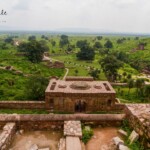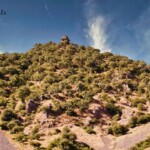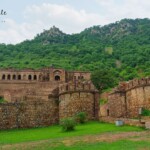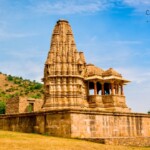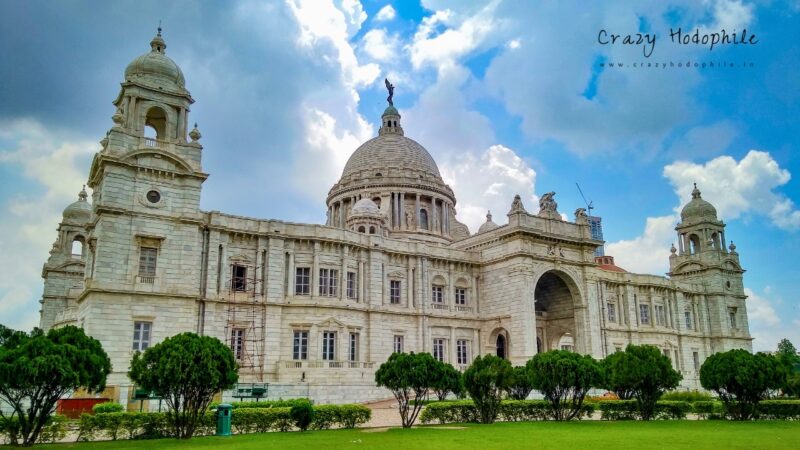Bhangarh Fort: Why It’s Haunted, Best Time to Visit & Travel Tips | Crazy Hodophile | 2025
Bhangarh Fort, a magnificent 16th-century fort in Alwar, Rajasthan state of India, is a captivating blend of history, architecture, and folklore. Built by the Kachwaha Rajput ruler Raja Bhagwant Das, it was once a flourishing town, home to over 9,000 houses. It’s now a deserted place that draws visitors to explore its past and discover why it was abandoned.
Table of Contents
Overview
Bhangarh Fort is located in the beautiful Aravalli Hills, close to the famous Sariska Tiger Reserve. It offers much more than just spooky tales. The fort’s impressive buildings tell stories of a long-ago time and invite you to explore its fascinating history.
A Peek into the Past
Bhangarh Fort was built in 1573 by Bhagwant Das, the Kachwaha Rajput ruler of Amber, for his younger son Madho Singh. It was primarily built using locally sourced stone, bricks, lime mortar, and marble. The fort served as a prosperous city during its peak, and it was home to temples, palaces, and bustling markets, protected by massive fortifications and five imposing gates, painting a picture of prosperity and grandeur.
However, this vibrant town met an unfortunate end. By the 18th century, Bhangarh was abandoned, leaving behind a collection of haunting ruins. The exact reasons for Bhangarh’s desertion remain a mystery. Some believe the town was abandoned due to a curse and supernatural events. Others attribute its downfall to invasions and natural disasters.
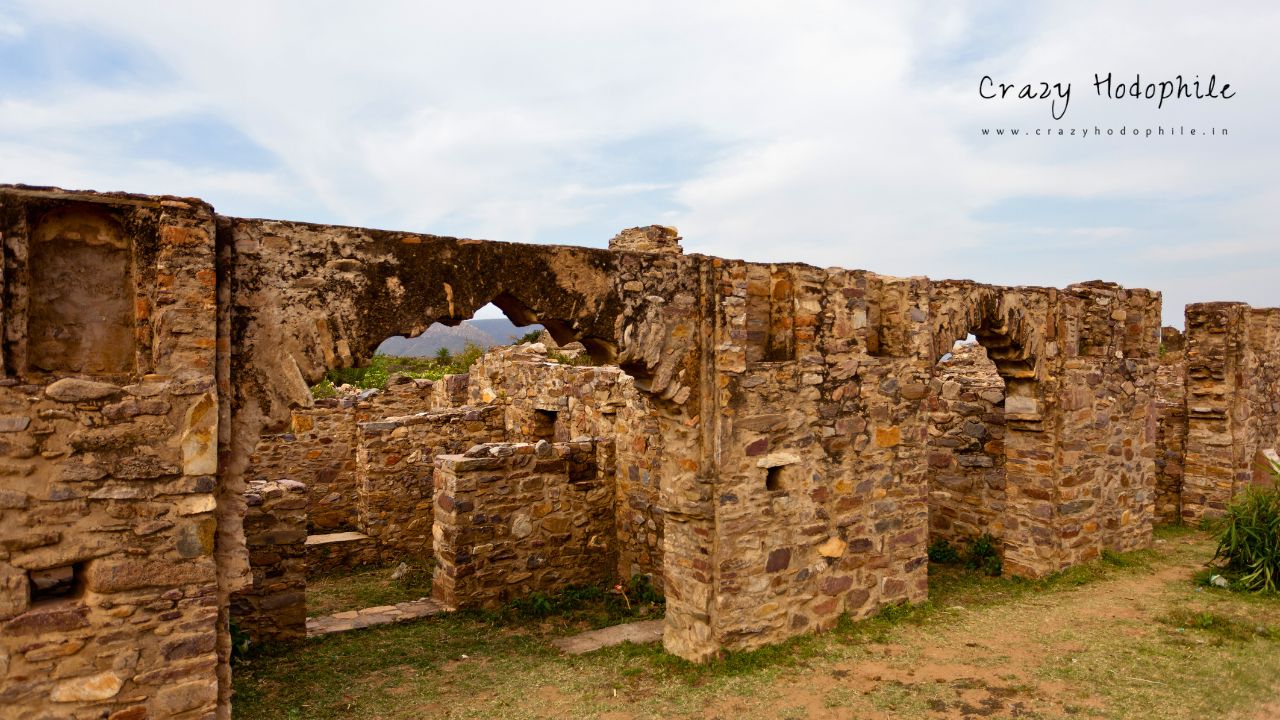
Architectural Grandeur Amidst Ruins
Despite its ruined state, Bhangarh Fort retains its architectural splendor. The fort complex houses:
- Royal Palace: Though in ruins, the palace still exudes an aura of royalty with its intricate carvings and expansive courtyards.
- Temples: Several temples, including the Hanuman Temple, Gopinath Temple, Someshwar Temple, Keshav Rai Temple, Mangla Devi Temple, and Ganesh Temple, stand as testaments to the town’s spiritual life.
- Havelis: Remnants of opulent havelis (mansions) showcase the lifestyle of the wealthy residents of Bhangarh.
- Gates: The fort’s five gates – Lahori Gate, Ajmeri Gate, Phulbari Gate, Delhi Gate, and the main gate – are impressive structures that once guarded the town.
Preservation & Renovation Efforts
Bhangarh Fort was declared a protected monument by the Archaeological Survey of India (ASI) in 1951. Despite being declared a protected monument, the ASI has faced challenges in fully demarcating the area around the fort, leading to complexities in its management and preservation.
Bhangarh Fort has undergone minimal restoration to maintain its authenticity. The Archaeological Survey of India (ASI) maintains Bhangarh Fort as a protected monument. While no major renovation work has been undertaken, the ASI ensures the preservation of the existing structures and prevents further deterioration.
Folklore and Legends of the Cursed Fort
- The most popular legend surrounding Bhangarh involves a Tantrik named Singhia, who fell in love with the princess Ratnavati, daughter of Raja Madho Singh. He attempted to use black magic to win her over but was caught and killed. Before his death, he cursed the town, predicting its destruction and abandonment.
- Another prominent legend involves a sadhu, a holy man, who resided within the fort’s vicinity. He led an ascetic life, meditating and seeking spiritual enlightenment. It is said that he gave his permission for the fort’s construction on one condition: that no structure within the fort should cast a shadow upon his humble dwelling. However, as fate would have it, one of the ambitious rulers of Bhangarh expanded the fort, adding structures that eventually cast their shadow over the sadhu’s abode. Enraged by this transgression, the sadhu cursed the entire town, predicting its downfall and eternal desolation.
Conclusion: Whether these stories are true or simply folklore, they undoubtedly contribute to the unique allure of Bhangarh Fort, making it a destination that sparks curiosity and leaves a lasting impression on all who visit. Some locals even say that treasure is still present somewhere in the fort and to keep it safe, misconceptions about hauntings have been deliberately spread. This is the reason why the government too does not deny these legends, further fueling the mystique surrounding Bhangarh.
Exploring the Fort
- Main Gate: The entrance to the fort complex, leading to the primary marketplace and temples.
- Royal Palace: Explore the ruins of the once-grand palace, imagining the lives of the royals who resided there.
- Temples: Visit the various temples within the complex, each with its unique architectural style and deity.
- Havelis: Wander through the remnants of the havelis, picturing the bustling life that once filled these homes.
- Gopinath Temple: This temple is particularly noteworthy for its intricate carvings and impressive structure.
Gallery
Opening and Closing
It is open from sunrise to sunset every day.
Note: Entry is prohibited after sunset to ensure visitor safety and preserve the site.
Best Time to Visit
The best time to visit Bhangarh Fort is during the winter months, from October to March. Here’s why:
- Pleasant weather
- Festive atmosphere
Entrance Fee & Other Charges
Entry to Bhangarh Fort is free. However, be aware of potential additional costs:
- Parking: A small fee may apply.
- Camera: A nominal charge may be levied for filming.
- Guides: Optional guided tours are available for a fee.
Amenities
There are no amenities like restrooms or food stalls within the fort premises. Basic facilities can be found in the nearby village of Bhangarh.
Visiting Tips
- Carry water and snacks as there are no amenities inside the fort.
- Carry a power bank with you for emergency purposes.
- Wear comfortable shoes as you’ll be walking on uneven terrain.
- Respect the historical and cultural significance of the site.
- While exploring the fort, be mindful of deserted areas like the “Tantrik ki Chatri,” a small stone structure that may harbor wildlife such as bats and snakes. It’s best to admire these areas from a safe distance.
Bonus Tip:
For truly breathtaking photos, visit Bhangarh Fort during the golden hour, shortly after sunrise or before sunset. The soft, warm light casts magical shadows on the ruins, creating a photographer’s paradise.
What to Avoid:
- Littering
- Defacing the structures
- Visiting after sunset (as per local beliefs and ASI guidelines)
- Disrespecting local customs and people
- Eating food in the presence of monkeys
How to Reach
- By Road: Bhangarh is well-connected by road to major cities like Jaipur, Alwar, and Delhi. You can easily reach Alwar by bus from these cities, and then hire a taxi or auto-rickshaw for a comfortable journey to Bhangarh Fort. Several taxi services operate in Alwar, offering various options to suit your budget and preferences.
- By Air: The closest airport is Jaipur International Airport, approximately 88 km from Bhangarh Fort. From there, you can hire a taxi directly from the airport or take a bus from Jaipur’s main bus stand to Bhangarh.
- By Train: Dausa Railway Station is the closest station (30 km), but onward transportation options may be limited. For more frequent trains and easier connections to Bhangarh, consider Alwar Junction or Jaipur Junction (both 90 km away), though they require a longer taxi or bus ride to the fort.
Location Map for Bhangarh Fort
Nearby Attractions
- Ajabgarh Fort: Another historical fort offering panoramic views of the surrounding landscape. (Approximately 14 km away)
- Sariska Tiger Reserve: A renowned wildlife sanctuary known for its Bengal tigers and diverse flora and fauna. (Approximately 27 km away)
- Neelkanth Mahadev Temple: An ancient temple dedicated to Lord Shiva, known for its intricate carvings and peaceful atmosphere. (Approximately 30 km away)
- Naldeshwar Shrine: A serene cave shrine dedicated to Lord Shiva, nestled amidst the hills and offering a peaceful retreat. (Approximately 60 km away)
- Bala Fort: Also known as Alwar Fort, this imposing structure perched on a hilltop offers stunning views and a glimpse into the region’s history. (Approximately 88 km away)
- Siliserh Lake: A picturesque lake offering boating and scenic beauty. (Approximately 90 km away)
Related External References:


